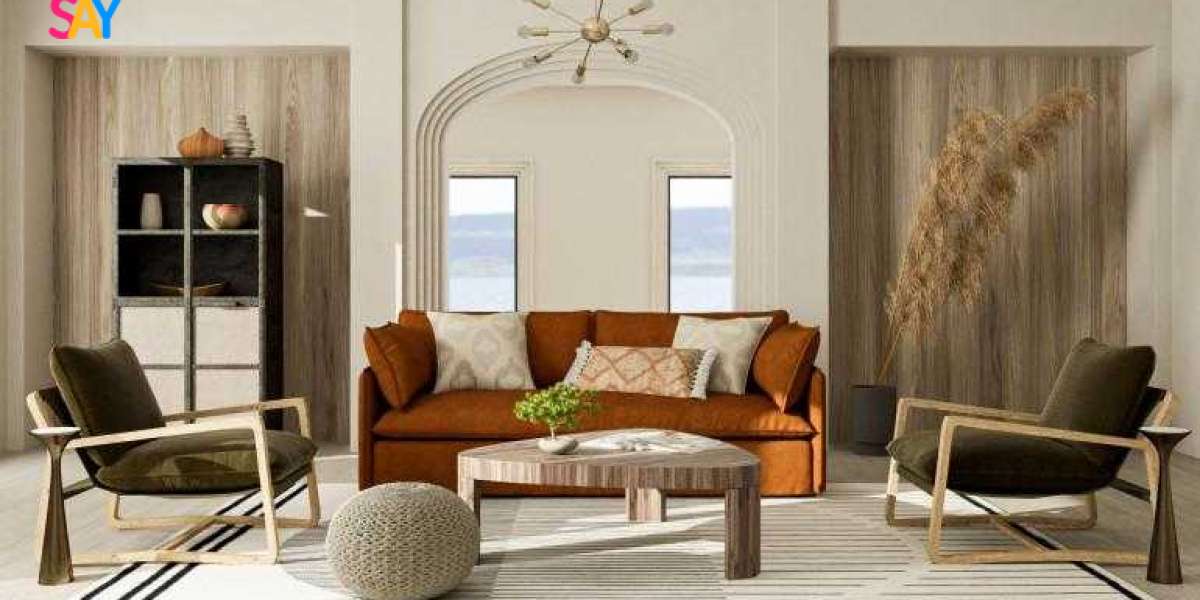Designing interiors for care homes isn’t just about picking colours and furniture—it’s about creating warm, functional, and safe environments that promote well-being for elderly residents. When done right, a well-designed space can improve mood, encourage social interaction, and even reduce the risk of falls or confusion.
That’s why choosing the right Care Home Interior Designers in London is a big deal. These experts specialise in blending aesthetics with functionality, ensuring each room serves its purpose while still feeling like home.
Why Interior Design Matters in Care Homes
We often overlook just how much our surroundings affect us. For older adults—especially those living with dementia or limited mobility—the design of their space can impact everything from their independence to their happiness.
Good design encourages:
Safety and ease of movement
Emotional comfort and familiarity
Engagement and connection with others
A sense of dignity and identity
And that’s where care-focused designers come in.
Key Features of Thoughtful Care Home Design
Designers who specialise in care environments know how to strike a balance between clinical needs and cosy living. Here are some essentials they focus on:
| Design Feature | Purpose |
|---|---|
| Colour contrast | Helps residents with visual impairments or dementia |
| Zoning and layouts | Encourages independence and orientation |
| Non-slip, easy-clean floors | Reduces fall risks and supports hygiene |
| Dementia-friendly cues | Supports memory through colour, artwork, and signage |
| Homely furnishings | Adds warmth without compromising safety or durability |
Creating Dementia-Friendly Environments
Designing for dementia requires special care. A bright, chaotic space may seem lively—but for someone with cognitive decline, it can be overwhelming.
The best care home interior designers in London focus on:
Clear visual cues and signage
Consistent flooring to avoid confusion
Personalised rooms with familiar objects
Strategic lighting to reduce shadows and anxiety
Professionals like Catalyst Interiors understand how to design spaces that are not only beautiful but also calming and intuitive for residents with memory challenges.
Balancing Comfort and Clinical Needs
Unlike hotels or regular homes, care homes need to meet strict health and safety regulations. But that doesn’t mean they should feel sterile or impersonal.
A great interior designer will:
Use fire-retardant, easy-to-clean materials
Design layouts for wheelchair and hoist access
Work with lighting and acoustics to reduce sensory overload
Integrate nurse call systems and equipment discreetly
All this ensures safety without sacrificing warmth and personality.
How Interior Design Supports Staff Wellbeing Too
It’s not just about residents—staff also benefit from good design. A well-planned care home supports workflow, reduces stress, and increases job satisfaction.
Considerations include:
Clear sightlines to monitor residents
Efficient layout for quick access to equipment
Comfortable break areas for staff wellbeing
Designated spaces that encourage collaboration
Care home interior designers who understand operational flow make a real difference behind the scenes.
Sustainability and Future-Proofing in Care Home Design
Many homes are now focused on long-term sustainability. Designers help care homes meet eco goals by:
Using low-VOC paints and eco-friendly materials
Maximising natural light to reduce energy bills
Designing with flexibility to adapt spaces over time
A modern care home should be future-proof—ready to evolve with changing needs and technologies.
How to Choose the Right Care Home Interior Designer in London
With so many design firms out there, how do you pick the right one for your care facility? Here’s what to look for:
| Criteria | Why It Matters |
|---|---|
| Specialism in healthcare/care sector | Ensures understanding of regulations and resident needs |
| Portfolio of completed care homes | Shows experience in real-world environments |
| Understanding of dementia design | Crucial for many facilities and resident care plans |
| Customisable design solutions | Every care home is unique—cookie-cutter won’t work |
| Post-installation support | Helps fix snags and adapt to feedback |
Always ask for case studies and client testimonials before choosing.
Benefits of Working with Local Designers in London
Going local comes with a lot of advantages. London-based care home interior designers:
Understand local planning rules and fire safety standards
Have easy access to your site for consultations and aftercare
Can recommend local trades and suppliers for quick turnaround
Often have established relationships with London care operators
Designers like Catalyst Interiors are well-versed in the unique expectations of the capital’s care sector.
Trends in Care Home Interior Design for 2025 and Beyond
As expectations evolve, so does care home design. Current trends include:
Biophilic design – Bringing nature indoors with plants and natural textures
Multi-use spaces – Creating lounges that double as activity hubs or therapy zones
Bold colour schemes – Moving away from beige, using colour to enhance orientation
Personalised bedrooms – Giving residents a sense of ownership and identity
Forward-thinking interior designers help care homes stay ahead of these trends while keeping resident wellbeing at the centre.
Cost vs Value: Investing in Design That Pays Off
It’s true—interior design is an investment. But when it’s done right, it can:
Extend the lifespan of furniture and finishes
Reduce accident risks and insurance claims
Improve CQC inspection outcomes
Increase referrals and occupancy through positive word of mouth
A beautifully designed care home isn't just more pleasant to live in—it's more efficient and marketable too.
Final Thoughts: Design That Makes a Difference
In care homes, design isn’t just decorative—it’s transformational. From safety and comfort to independence and dignity, the impact of a well-thought-out interior can’t be overstated.
If you're managing or developing a care facility in London, partnering with the right interior design team is one of the smartest decisions you’ll make. Companies like Catalyst Interiors bring a unique mix of creativity, clinical understanding, and heartfelt care to every project.




